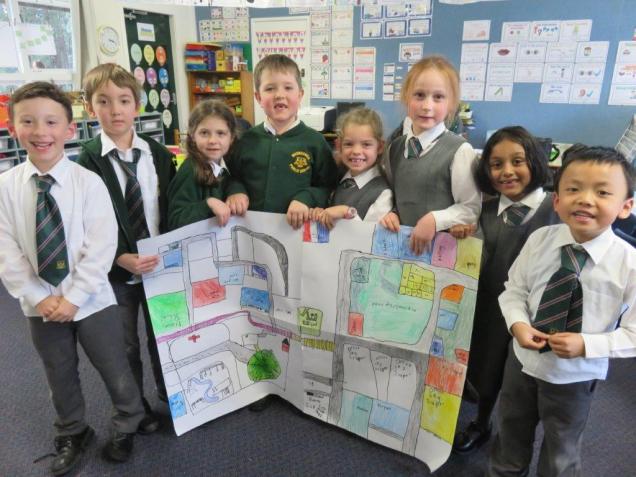In real communities we are constantly faced with challenges and a team of workers is employed to come up with solutions to these problems. We were faced with such an issue in our 1V community. The 1V river was flowing strongly right between our urban and suburban communities. How were we going to safely cross to the other side? What would be the most appropriate product to solve this problem?
We contemplated relying on ferries but decided that this was not the most efficient way for people or goods to cross from one community to another.
The solution….
A BRIDGE
But what type of bridge would we need? Are all bridges created equally?
The 1V students were excited about using the engineering process to design and construct their own bridge that would be able to span the 1V river and be strong enough to transport people and vehicles to the other side.
Students were firstly required to use their prior knowledge about bridges to design a structure that they thought would be suitable for the job. The design criteria was that their bridge structures were to be made only of 30 plastic straws and masking tape. Their finished designs had to be at least one straw length long and half a straw length high off the table. Their designs were not allowed to be secured to the table and had to be able to hold some Unifix cubes.

Designing our bridges

Designing our bridgees
They then set to work building their prototype #1. They had about 40 minutes to engineer their designs and this was challenging. Many students had some good ideas and had started building their designs. Unfortunately at the end of the time there weren’t any structures that held any Unifix cubes. We were (mostly) deflated but certainly not deterred.
What could we do? We decided that we would need to re-think our designs and see if we could devise a way to make our straw bridges stronger.

Re-thinking our designs

Altering our initial designs
It was time to build prototype #2. The design brief was the same but this time we were a little more successful with building. Quite a few students still found this challenging but some managed to build bridges that were able to actually hold some Unifix cubes. There was excitement in the room! Could we make them even stronger?
We were well on the way to becoming “real” engineers. After a further re-think of our designs, it was then time to build prototype #3. This was such an amazing session with some fabulous results. Quite a few bridges even held 30 or more Unifix cubes!
It was so encouraging to see many students who had battled with the design challenge process, persevere to finally construct a bridge that worked.
What a wonderfully rewarding experience and such a proud achievement!
We even had a real-life civil engineer who builds bridges come and talk to all of the year 1 and 2 classes about the engineering process of “real” bridge building. He then visited our classroom to view our own straw bridges. He was suitably impressed with our work.
Thank you for visiting, Mr Bent!
Hand in hand with our bridge engineering, 1V students were also working throughout the term on an inquiry-based learning project about bridges. They devised their own inquiry questions about bridges which would help them with their own bridge designs. They worked in teams to investigate the types of bridges that have been constructed all across the world. They discovered that bridges have different features which enable them to be stronger or more suited for a particular environment. This understanding of the engineering process of “real life” bridges assisted the 1V students with the design and building of each of their own straw bridge prototypes.
What engineering extraordinaires we have in 1V!


























































































































